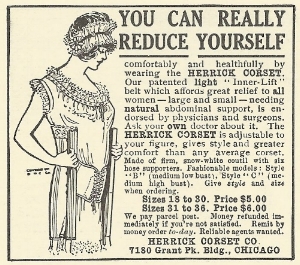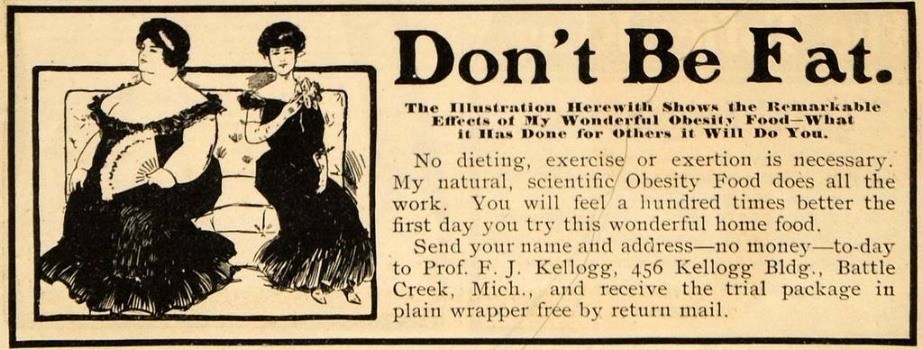Maybe being muscular isn’t all it’s built up to be.
You’ve been mugged.
Late one night under the cover of darkness you found yourself blindly cowering at hands of an attacker. You didn’t see the guy who attacked you but the police still call you in to view a line-up of possible suspects. From right to left your eyes scan over 4 men. Too old … too skinny … too short ... eureka! Standing in front of you is a complete monster with arms so big that they could burst through his shirt at any second. Even without ever laying eyes on your mugger, you don’t have a single doubt in your mind that this jacked-up animal is him. That’s the criminal who attacked you.
Although the above is simply a fictional story it represents a powerful and inescapable stereotype that for decades has haunted those with muscles.
Got muscle? Welcome to a lifetime of typecasting as a violent, mentally-ill, unintelligent, steroid using criminal – and if you’re a female then you can add the fact that somehow you’ve suddenly grown balls and have dreams of becoming a man.
But how can this be? We’ve all got muscle to some extend or another. So, why is a muscular body ridiculed, criminalized and condemned? Since when did muscle become bad?
To answer this we must to turn back the clock to the late-1800s. Here in the shadows of a time known for many great discoveries, is the start of a long and disturbing history that continues to promote what a criminal body looks like.
Emerging as a product of Darwinism, the field of criminology started as a way to help society identify and get rid of anyone that they perceived to be ‘bad’. For example, in Italy a physician and psychiatrist named Cesare Lombroso began to make claims that all criminals had similar physical features. How could a crooked nose and anchor tattoo on the arm of a sailor automatically condemn a man as criminal?
Such ideas quickly found their way across the Atlantic and with America’s growing prison system more theories of what it meant to look like a criminal erupted. Here’s when muscle first got added into the mix.
By the turn of the 19th century the notion of muscular Christianity gained popularity throughout the United States - which linked muscle building to improving morality. This movement inspired prison officials at New York’s Elmira Reformatory to use physical activity and sport as a way to fight the physical decay that had become associated with criminality. That’s right, being muscular was thought to make a man less criminal.
The support for men to build muscular bodies continued into the turn of the 20th century. A growing sport movement was taking Western nations by storm and event such as the first modern Olympics of 1896 helped to show the world what being physical fit could do for a man’s body and mind. Clear boundaries of how much muscle was socially tolerable was set by the same field that has brought to us the science of body composition testing – the field of anthropometry.
For the average man some muscle and strength was desired … but if you went too far … got too big and too strong then you were literally forced to run off and join the circus. As traveling performers, strongmen and women helped to build popular opinion of the muscular body – often one of curiosity and mystery. Muscle had now been made into another sideshow act of the Freak show.
The arrival of Prussian strongman and founder of bodybuilding, Eugen Sandow to the United States further developed public interest in a heavily muscled physique. Sandow’s vaudeville acts were closely followed by the launch of Bernarr MacFadden Physical Culture magazine in 1899. Headed by the motto “Weakness is a crime; don't be a criminal!” the magazine revealed to the average man all the fitness and diet strategies needed to develop a mainstream muscular physique.
And so another element is added into the muscular myth. Too much muscle will turn you into a one-man circus freak show … but too little muscle makes you a criminal.
Even after the horrific Nazi eugenics movement defined the muscular male body as god-like there was little judgement against muscle within popular culture – that was until in the 1950’s the father of somatotyping, William Sheldon, suddenly defined muscle as bad.
Funded by the Rockefeller Foundation, his work was a melting pot of pseudo-science, power struggles and dirty money. To say it nicely, Sheldon was a bit of a crock – and unfortunately a very resilient one.
Here’s what Sheldon preached. All male bodies can fit into 3 basic body types – endomorph, mesomorph and ectomorph - an idea that many of us in the fitness industry know well.
BUT here’s something most don’t know about somatotyping theory. Sheldon specifically promoted that men with muscular mesomorphic bodies are more prone to criminal activity, violence and aggressive acts.
Exploring the merits of body typing theory is beyond the scope of this article. It’s one that we can have another day, but regardless of if you agree with the disillusion of somatotyping or not there is one very important take away message here.
Sheldon’s work and those who followed in his theoretical footprints have created an incredibly stigmatizing message about the muscular body:
Muscularity = Deviance.
Muscularity = Aggression.
Deviance + Aggression = Criminality.
It would be easy for me to end the story there but unfortunately there is a lot more to this dangerous equation. And so we continue in the 1970s. Thanks to Arnold Schwarzenegger something really interesting happen that would for better or worse rebuilt muscles reputation.
In bodybuilding circles Arnold and Pumping Iron have been regarded for bringing bodybuilding into the mainstream but they did much more than just that – they helped to change what it meant to look like a man… muscles! Suddenly muscle became the standard for American manhood. That’s right muscularity = masculinity.
Size now mattered when it came to muscle, and it was nowhere more apparent than in the media. By the early 1980s the hard-bodied action star dominated the silver screen and made a place for heavily-muscled bodies within popular culture. Pair this with an enormous in spike in films suddenly showing jacked-up inmates pumping iron in the pen and we can start to see a highly visible - yet completely false - representation of exactly what Sheldon’s research stated… the big bad bodies of muscular criminals.
Back behind the gates of academia, researchers continued to pump-out studies focusing on how muscularity was responsible for criminal behaviour. As if being muscular wasn’t bad enough, during the early 90s researchers had started to explore the relationship of testosterone to criminal behaviour. One study went as far to state a “well-established relationship” between testosterone’s effects on the brain and body build – but get this. The researchers state that testosterone only enhances upper body muscle. Unfortunately, this particular study became the media’s go-to source to try to explain everyday acts of criminal behaviour.
Fast forward to today. Where does having a muscular physique get you in 2015? For both men and women this remains a conversation full of complex contradictions.
While there continues to be an open disrespect for bodybuilding and the culture of muscle it represents, there is also a sense of admiration and respect for those who have average or “good” levels of muscularity.
Rigid social norms require men to have some muscle in order to be considered masculine, and it is necessary for female and male athletes to have heightened levels of musculature in order to achieve sporting excellence.
Furthermore, when female muscle serves a functional purpose such as when a Xfit athlete flings her body over a chin up bar in a convulsing motion society seems to be a-ok with her shredded six-pack but when this same body is posed on stage in front double bicep wearing a sparkly bikini her body suddenly becomes grotesque and “manly.”
Don’t forget about the absolutely absurd pathologization of muscle as a mental illness, such as Dr. Harrison Pope’s psychological diagnosis of “muscle dysmorphia” or bigeroxia. Pope and his colleagues have such strong ideas on what is are ‘appropriate’ levels of muscle and the wrongful desire to work out that they have created a mathematical formula (the Fat Free Mass Index) to determine the level of musculature a person can achieve without anabolic steroid use. How’s that for science!
And if it wasn’t complex enough, the condemnation of muscle has morphed into an all-out war against performance enhancing agents and the ridiculous automatic vilification of anabolic steroids and those who use them. Regardless of their rich and vast cultural history, the discussion of anabolic steroids revolves around a combination of legal, ethical and medical arguments that steroid use is unfair, unethical, medically dangerous but above all criminal.
Furthermore, most popular discourse around anabolic steroid use pertains to only one user, and one user alone – the muscular male. This is nowhere more clearly exemplified than in Sweden’s recent law changes which now allow police officers to search, arrest, and conduct mandatory drug testing based “anabolic steroids physical characteristics” such as “puffy and bloated body” and “swaying walk.”
How do the police get away with blatant acts of stereotyping in the 21st century? It’s a little something the legal system calls “probable cause” based on a person’s physical appearance. Like skin color or ethnic background, muscularity should not provide the grounds for violating someone’s basic human rights and personal privacy.
Let’s get something straight here.
Muscle itself is neutral in biology.
It is neither male or female – nor is it wicked, immoral or evil. Having varying degrees of muscularity does not produce more or less intelligence, aggression, mental illness or criminal behaviour.
In its most pure form, muscle is simply a grouping of muscle fiber cells surrounded by some connective tissue - yet, overtime society has and continues to constructed particular meanings and definitions of what it means to be muscular ... we have made muscle bad.
Simply put, being muscular isn’t all that it is built-up to be.
Originally Published: Feature, Muscle Insider Magazine, 24: Aug/Sept 2015










